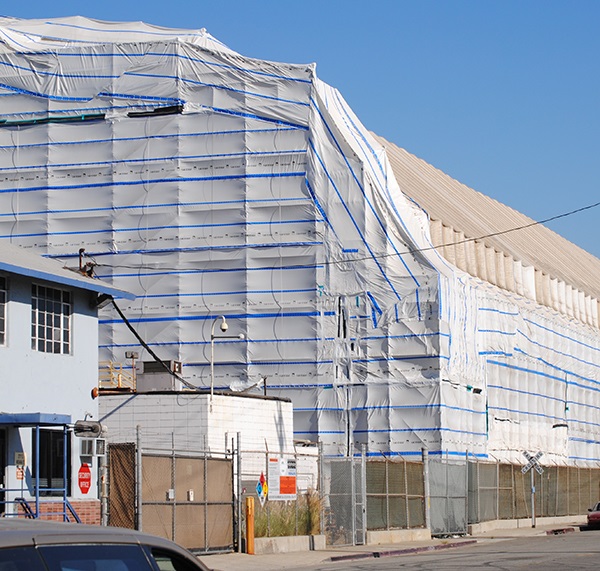State sues to recover Exide cleanup costs
By Alfredo Santana
Contributing Writer
LOS ANGELES — The state is suing the former owners of the Exide battery recycling plant in Vernon and a group of companies that did business with Exide, aiming to recover hundreds of millions invested in cleaning properties polluted by the release of the toxic substances by the plant.
California Attorney General Xavier Becerra and six of his lawyers filed the lawsuit last month on behalf of the state Department of Toxic Substances Control, against NL Industries Inc., Gould Electronics Inc., and JX Nippon Mining and Metals Corporation for owning and operating the Vernon plant for decades before Exide Technologies’ bought the plant in 2000.
The 39-page complaint, filed at the U.S. District Court for the Central District in California, also named as defendants Kinsbursky Brothers Supply Inc., Trojan Battery LLC, Ramcar Batteries Inc., Clarios LLC, Quemetco Inc., International Metals Ekco Ltd., and Blount Inc., or their previous corporate owners, for arranging and transporting hazardous substances to the recycling site for treatment and disposal in the last 30 years of operation.
The lawsuit did not include Exide Technologies, or its new owner Atlas Holdings LLC. Exide filed a third bankruptcy case last year with the U.S. Bankruptcy Court in Delaware, and its assets in the United States were sold for $178.6 million, leaving California taxpayers hooked with the cleanup bills.
If the state wins this case, it would become the largest Superfund site in the state’s history. The lawsuit said the state’s unreimbursed costs related to the facility from 2015 to 2020 total $136.5 million, plus interest and legal fees.
“These parties share the responsibility for the contamination plaguing the thousands of people and families who live and work in the shadow of this site,” said Department of Toxic Substances Control Director Meredith Williams. “With this lawsuit, we are seeking justice on behalf of not only the surrounding affected community, but other communities across the state suffering the impacts of intergenerational environmental justice.”
KBI Brothers International Vice President and attorney Daniel Kinsbursky said in a statement that “KBI, like thousands of other companies, shipped recyclable materials to Exide’s Vernon site, which California state regulators had for decades authorized Exide (and prior operators) to accept and process for recycling.”
“At no time was KBI ever involved in any aspect of the Vernon operations.”
Clarios LLC spokewoman Kari Pfisterer did not return messages seeking comments related to the lawsuit.
Each of the companies named in the complaint were identified through manifests carried along shipments of hazardous substances to the facility from 1988 to 2015, as generators of waste shipped for disposal or treatment at the Vernon plant.
With the suit, the state would recover a slice of the $250 million earmarked for cleaning 3,200 contaminated properties in East Los Angeles, Boyle Heights, Maywood, Bell, Huntington Park and Commerce, and possibly tap on resources to clean 7,800 more properties blanketed with hazardous substances at an additional cost of $390 million, according to a state audit report released in October.
In addition, 21 state legislators mailed Gov. Gavin Newsom on Dec. 21 a letter urging him to allocate $411 million to continue cleaning 5,700 properties fouled with hazardous chemicals released by the facility in nearly 100 years of operation.
The letter, signed by Assemblymembers Miguel Santiago, Lena Gonzalez, Cristina Garcia, state Sen. Maria Elena Durazo, Los Angeles City Councilman Kevin De León and county Supervisor Hilda Solis, said that the Department of Toxic Substances Control cleaned 2,100 properties as of Dec.11 with public funds.
“Today we ask the governor to prioritize every single one of the thousands of families living with toxic lead levels due to Exide by allocation $411 million in his January budget proposal,” Assemblywoman Cristina Garcia wrote. “Doing so is the just and right thing to do after every level of government has failed my community for decades.”
The suit claims that the release of lead and arsenic harmed thousands of nearby residents, “many of whom are part of a population group that has suffered historically disproportionate impacts from economic, environmental and racial injustice.”
Activists involved in protests to demand money allocation to clean soil from contaminated properties questioned why the most recent culprits remain unscathed.
Idalmis Vaquero, a UCLA environmental law student and Boyle Heights resident, said the state efforts to recover public money does nothing to hold Exide Technologies and its new owners accountable.
Vaquero, a member of the group Communities for a Better Environment, told the Los Angeles Times that “anything that can help recover money and put it toward the cleanup is needed, but he feels like it is too little, too late because the real responsible parties are already off the hook.”
The bankruptcy allowed the formation of an independent smelter cleaning trust fund being supervised by the Department of Toxic Substances Control with Exide’s cash contribution of $2.6 million and $11.6 million in bonds, about $15 million less than initially agreed.
It is not clear whether the bonds in the trust are issued by the Department of Treasury, or are corporate.
In a separate case, the Department of Public Substances Control, vowing to hold Exide and its new owners accountable, appealed the bankruptcy’s decision to get financial relief for the quagmire left behind in schools, parks, homes and underground water sources.
The recent lawsuit said the state doubts the trust fund carries enough money to tear down the hulking structure and, at the same time, control new pollutants.
The state is seeking to get reimbursed for the costs of running environmental impact studies and dismembering the aging structure, while forcing the companies to conduct the remaining investigation and cleanup work.
“As a result of Exide’s most recent bankruptcy, [money] has been transferred to a vastly underfunded response trust with only enough funds to conduct limited closure activities, leaving most of the dangerous contamination at the facility unremediated,” the complaint reads.
The audit estimated that $650 million would be required to remove chemicals that seeped into the ground and landed on soil of 10,160 properties found in a 1.7-mile radius from the Exide facility, now covered with plastic sheets.
The battery recycling site was closed in 2015 as part of a previous bankruptcy settlement that called for Exide to spend $50 million for cleaning the facility, with $26 million to be used for residential cleaning.
But delays in payments and a growing number of complaints from residents with ailing health conditions caused by the toxic substances forced the state to approve public funds and spearhead cleanings in the affected communities, becoming a de facto sponsor of the environmental endeavor.
Based in Dallas, NL Industries manufactures ball bearing slides for office furniture, and owns a significant stake in Kronos Worldwide, a producer of titanium dioxide, a compound that whitens a wide range of items, from wall paint to computer mice to sunscreen to cosmetics.
Both companies are public, and trade shares in the New York Stock Exchange.
NL Industries became an owner of the Vernon facility, and became a liability party following its purchase from Morris P. Kirk, who operated the plant from 1925 to 1973 and owned it until 1974.
The complaint said NL Industries sold the facility to Gould Inc. on Jan. 31, 1979.
Gould Electronics was a batteries manufacturer acquired by JX Nippon Mining in 1988, followed by its liquidation in 2014. JX Nippon Mining and Metals headquarters in the United States are in Chandler, Arizona.
JX Nippon Mining became owner and operator of the Vernon site from 1979 to 1984.
NL Industries and JX Nippon Mining were contacted, but did not return phone calls and emails seeking comments for this story.
The Vernon facility crushed batteries, split plastic from lead and arsenic, and either stored or discarded chemicals that cause cancer, brain damage and asthma. Environmental reports conducted to gauge the site’s pollution conclude that large quantities of toxic metals sipped beneath the ground as batteries were dismantled.












